
Conclusion to the Liberation of Europe
When the bombs stopped falling and the peace treaties were signed, the world began to question what the war – and the Liberation – meant.
The same questions that were being asked in 1945 are still being asked today. Have national narratives been fairly shaped by the war and the Liberation? Do people remember the war and the liberators as they really were – or how they want to see them? Can we learn any universal lessons from World War II, or was it an episode of history that is inseparable from time and place?
The Liberation, as explored in this book, is at once a series of battles culminating in the defeat of Nazi Germany and a vastly complicated web of decisions and deeds. If World War II is reduced to a simple narrative, governments and citizens across Europe risk ignoring the lessons learned by those who lived through the war and the Liberation. Countless soldiers, politicians, civilians, victims and survivors have done their best to communicate their experience through written, recorded and filed accounts – it’s up to the new generation to listen.
As people today sift through evidence and consider its meaning, it is important to be wary of two distractions: patriotism and moralizing. Each country involved in World War II remembers its catastrophic events and the Liberation in a different way; national memories are not always universally true and are rarely compatible with each other. The countries that were occupied in 1939–40 remember the Liberation very differently to how the same events are perceived in the UK, which stood apart. In the USA, the view of the Liberation is different again, sometimes reduced to a story of America selflessly intervening to save the Europeans from misfortunes that they had brought upon themselves. Within each country, too, experiences were extremely varied. Listening to as many stories as possible can help understand what the war meant and means in the past, present and future.
Just as historical memory is shaped to fit a national narrative, the historian – and reader – is influenced by their own conscious and unconscious biases, as well as by who they choose to read or listen to.
It is tempting to see World War II and the Liberation as nothing more than a morality tale of good versus evil, in which young men from across the seas – often without a clear idea of why they were in Europe at all – sacrificed their lives to deliver freedom. In the 21st century, people have the advantage that distance brings, the benefit of hindsight and the ability to consider the war and the Liberation from multiple angles. It is hard to imagine the complex forces that acted on an individual soldier, occupier, collaborator, citizen or victim at the time. Acts of barbarism and atrocity were committed on both sides; so were acts of humanity and heroism.
Despite the problems associated with remembrance, some basic principles can be garnered from World War II and its conclusion. There are always exceptions, and the actions of the USSR during and after the war are extremely problematic, but three statements are tentatively true.

Credit: Getty Images
Routes of Liberation, a travelling exhibition created by the Liberation Route Europe Foundation
Firstly, the Allies’ aim – or at least the western democracies’ – was broadly noble: for stronger states to restore autonomy to weaker ones and to foster international diversity. The Allies fought to prevent military might from dictating international relations.
Secondly, the Liberation succeeded because a variety of nations were able to temporarily set aside their individual interests and cooperate to achieve a shared goal. This collaboration paved the way for the creation of the United Nations and the European Union.
Thirdly, in the case of the western Allies, the Liberation was – for the most part – ethical and law-respecting in its methodology. Terrible atrocities were committed, but they were recognized and condemned. The concept of human rights emerged as a result.
Still, it is hard to see the Liberation as essentially hopeful. Europe had failed to prevent the outbreak of World War II in 1939, and by 1945 the war had cost more than fifty million lives. The damage and destruction wreaked by World War II remains a powerful cautionary tale.
It must also be emphasized that while the Allies proved themselves adept at the military challenges of liberation, the process of freeing the occupied states of Europe was far from perfect. Many of the liberators vilified the entire German population and the Allies also did little to nurture homegrown resistance movements within Germany that might have succeeded in shortening the war.
To continue learning from World War II, it is important to remember its events in as many ways as possible. The monuments, museums, battlefields and cemeteries that mark the Liberation Route across Europe all tell a different story from a different perspective, contributing to a shared European history. Each one is a potent reminder of the lessons learned by previous generations, and a prompt to apply them to the tensions of international affairs that characterize our complex modern world.
After the destruction of World War II and the Liberation came the formidable task of rebuilding Europe.
Throughout the war, a great deal of permanent damage was caused by the armies of the Allied and Axis powers, as well as by their air forces. Total war had left structures of every kind – houses, roads, railways, factories, schools, hospitals and churches – scarred, demolished or obliterated. The unprecedented number of explosives and incendiaries had razed entire towns and villages to the ground, and many cities lay in rubble. Roads and fields were cratered. Every bridge across the Rhine had been blown up, as well as countless bridges across smaller rivers.
Some of this damage was inflicted deliberately, as military and economic targets were pummelled relentlessly in order to drive the enemy back. Scorched earth policies were used to great effect by the Red Army in 1941 – devastating crops, bridges and factories as they retreated from the Germans – and Hitler frequently ordered the destruction of a city before the Allies moved in. Much of the damage, however, was unintentional, the collateral effect of armies passing through and the aftermath of bombing missions of varying accuracy. Munitions were occasionally fired or dumped in strategically insignificant locations – or on residential areas to sap civilian morale – producing nothing but more loss and misery.
The toll of war was staggering. The success of a bombing campaign on a German city was measured in a percentage of obliteration. Bremerhaven, for instance, was judged to have only 21 percent of its prewar buildings standing at the end of World War II. In the UK, London sustained serious damage under the rain of German bombs and missiles. Other towns and villages – Ortona in Italy, Caen in France and Bastogne in Belgium – were pulverized by close-quarters combat between two armies determined not to yield.
Incredibly, for all the destruction wrought along the routes of the Liberation, there were places that survived more or less unscathed. Paris was treated as a shrine of civilization; it was spared in 1940 and – despite Hitler ordering its destruction – again in 1944. In Poland, Warsaw was almost totally obliterated, while Kraków was barely touched.
In 1945, a decision had to be made over whether ruined landscapes should be left as they were, swept away or reconstructed. Nature – the ploughed-up fields and the woods shattered by tanks – would repair itself over time. The manmade infrastructure that sustained civilization, however, could only be revived through a colossal reconstruction effort. This task was undertaken by ravaged local populations and liberators alike.
In addition to the physical landscape, Europe also needed reconstructing in other, less material, ways. Societies had been polarized by the promises and threats of Nazism; political institutions had been suspended, exiled or replaced; people’s belief in human morality had been shaken; and bonds of cooperation and trust had been worn. In all these ways, Europe needed reconstructing too. If the war-torn nations of Europe couldn’t rebuild their democracies and networks of self-help, the Liberation would have failed in its final aim.
World War II left a legacy of unseen traumas which would take a long time to heal, but beginning Europe’s physical reconstruction would improve living standards while politics and society returned to some kind of normalcy. Immediately after the war, the Allies repaired and rebuilt what was needed in the short term. Roads, railways and bridges were essential for the Allies to move about, for refugees to be relocated and for food (in scarce supply) to be distributed.
There was also a pressing need to demilitarize Europe, which was awash with munitions. After the armistice, people were still being killed by landmines, and farmers frequently turned up unexploded bombs in their fields. Even today, lost bombs dropped decades ago are occasionally found in unexpected places.
Paradoxically, reconstruction also involved more destruction, as the vainglorious monuments and statues of the Third Reich were torn down.

Credit: Getty Images
Russian and British staff in Berlin, led by Montgomery (centre, in beret) and Zhukov to his right, 1945
Once the immediate needs of Europe were met, long-term planning could begin. The USA had ended the war with its homeland entirely unscathed, and – unlike much of Europe – its economy hadn’t been completely decimated by military demands. The debate in Washington towards the end of the war, and immediately after the armistice, centred on how to deal with a shattered postwar Europe. It was generally agreed that since the USA had nobly helped liberate Europe, it should have a hand in the continent’s recovery, too. There were also pragmatic reasons for the USA’s continued involvement. The Americans were fearful that if Europe wasn’t helped back to its feet, chaos or – worse still – Soviet communism might take hold. A recovered Europe would also be able to trade with the USA – and buy its goods.
Aiding the reconstruction effort in France or Belgium was one thing, but it was harder to know what to do with Germany – the instigator of the war, disgraced and defeated. Should its surviving population, purged of Nazis, be held responsible for the events of World War II and punished accordingly?
For most of the war, the general feeling among the Allies was that Germany should pay for its transgression against the international order, just as it had in 1918. In the summer of 1944, US Secretary of the Treasury Henry Morgenthau Jr. forwarded a proposal to deal harshly with a post-surrender Germany. He argued that the country had to be prevented from instigating a third world war. To this end, it had to be broken up – parts of its territory should be awarded to Poland and France, and the remainder divided into two autonomous, largely agrarian states. The industry of the Ruhr – the manufacturing heart of the German war machine – should be dismantled and given to the victors (mainly the USSR) as reparations, and all its mines destroyed. This plan was discussed at the Quebec Conference of September 1944, where it found some sympathy with Roosevelt, who insisted that the German people should not be allowed to think of themselves as innocents of their government’s crimes. The Morgenthau Plan, however, was quickly utilized by Nazi propaganda: if this was Germany’s fate, what choice was there but to fight on?
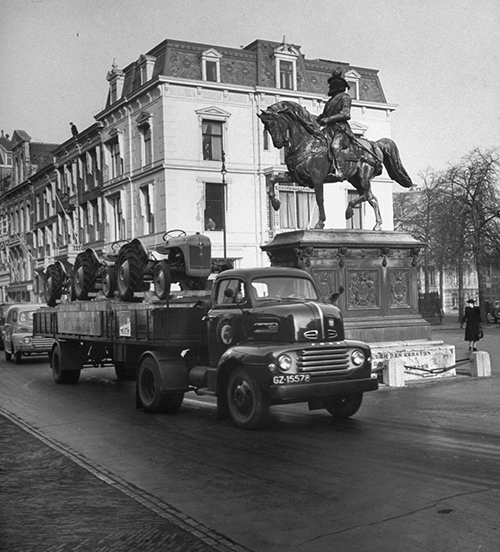
Credit: Getty Images
Marshall Plan truck carrying tractors
As peace became a reality, a more considered policy emerged. World War II had been caused, at least in part, by German resentment at the punitive way it had been treated at the end of World War I. They would not make the same mistake twice.
The USA’s attitude towards reconstruction was settled by the emergence of the Cold War. The Soviets made it clear they intended to “Bolshevize” the territories in eastern Europe that they had acquired by liberation-conquest. Russia reconstructed these new zones of influence in its own image.
In response, the Americans began to see the advantages of a proactive plan to help Europe recover and rebuild as part of the capitalist world. An ambitious programme of financial assistance, known as the Marshall Plan (named after the US secretary of state but officially called the European Recovery Program), provided the means for western Europe to rebuild (physically and economically) after the ravages of war. Britain, France and Germany were all leading beneficiaries of Marshall money. Much of this was “tied aid” – money lent on the condition that a proportion would be used to buy from American businesses. The Marshall Plan benefited the USA by increasing its influence in Europe and creating willing trading partners equipped with the money to buy American consumer goods. Only Spain, still under fascist rule despite the defeat of Nazism, was denied Marshall funds.

Credit: Getty Images
Women form a human chain to carry bricks during the reconstruction of Dresden, March 1946
The people of postwar Europe took the help they were offered and set about rebuilding. Construction work took different forms in different places. Historic buildings and medieval quarters were sometimes painfully reproduced, but where the destruction had been almost absolute the opportunity was taken to give full expression to stark modernist visions of concrete architecture. The heavily bombed port of Le Havre in France is considered a masterwork of postwar re-planning. German towns, too, often chose resolute futurist solutions to plugging the gaps in streets created by bombs: better to build looking forwards than to reconstruct the edifices of a past of which no one wanted to be reminded.
Immediately after the war, the prevalent attitude in Europe was to forget what had happened in the terrible years of 1939–1945. Gradually, however, it became clear that covering up the tragedy would not erase the memories of World War II, nor prevent a similar event in the future. There was a need to remember the past, but in the right way. In a few places – Oradour-sur-Glane in France and San Pietro Infine in Italy – the ruins were deliberately preserved as a warning to future generations against succumbing to an ideology of militarism and hate. Similarly, although most concentration camps were razed by the liberators as abominations that should never have existed, a few were preserved and opened to visitors as proof that the unspeakable and unimaginable really had happened.
As memories of the war receded, Europeans were increasingly able to come to terms with what they or their parents had lived through, and it seemed vital to build monuments and museums along the Liberation routes. All around, postwar buildings celebrated contemporary life, but space was found to honour the memory of World War II, too.
Towards the end of World War II and the Liberation, people around the globe turned their attention to how the Nazi perpetrators and collaborators should be dealt with.
As the extermination camps began to be liberated at the end of 1944 and the world became aware of the full extent of the horrors committed by the Nazi regime, so the call for justice and retribution became louder. Many Germans who lived near the death camps were forced to enter them and witness what had taken place there. And as the war ended, thousands of extrajudicial summary executions took place across Europe, both spontaneous revenge attacks on, for example, concentration camp guards, as well as more organized round-ups of those known to have collaborated within occupied countries. In France, an estimated 10,000 people were executed without trial before the Provisional Government took control and established a legal process for trying alleged collaborators.
Officially, it was widely felt that war crimes should be punished only after due process, and that a fair trial was one of the things that distinguished the western democracies from Nazi Germany, a country whose notorious People’s Court presumed guilt rather than innocence, rarely admitted evidence and executed thousands. As early as November 1943, the “Big Three” Allied powers issued the joint Moscow Declaration stating that those who had taken part in “… atrocities, massacres and executions will be sent back to the countries in which their abominable deeds were done in order that they may be judged and punished according to the laws of these liberated countries.”
The question of what to do with the senior Nazi hierarchy and those who had committed war crimes in Germany had been raised at the Yalta Conference of February 1945. Churchill’s view that at least some of the top Nazis should be executed or imprisoned without trial was opposed by Roosevelt, who felt that this would be unacceptable to the US public. Stalin was in favour of a trial because of the humiliation it would impose on the vanquished. But this was another concern for the British who worried that Soviet involvement might bring to mind the notorious 1930s Moscow show trials of Stalin’s Russia, in which thousands were imprisoned or killed on little or no evidence.
On 8 August 1945, the three main Allied powers plus France drew up the London Charter, a protocol for the trial of 24 Nazis to take place before an International Military Tribunal at Nuremberg – a former heartland of Hitler supporters where massive Nazi rallies had taken place. The charter defined three types of crime: crimes against peace (waging wars which violated international agreements); war crimes (acts in violation of the rules of war); and crimes against humanity (these included murder, extermination, enslavement and deportation).
The first and most famous of the trials began on 20 November 1945. The judges and prosecutors were selected from each of the signatory countries of the London Charter, while the defence lawyers came from Germany. Films of the concentration camps were shown as evidence and witnesses testified to what they had had to endure. It was the first time that the newly coined term “genocide” was used in a court case. The trial lasted almost a year and ended with three of the defendants being acquitted, three getting life imprisonment, four receiving sentences of 10–20 years, and the remaining twelve sentenced to death by hanging.
Some of the defendants, in particular generals Keitel and Jodl, attempted to use what became known as the Nuremberg Defence, that they were “only obeying orders”. They too were executed. The most effective defence was conducted by Albert Speer, Hitler’s architect and armaments minister, who accepted responsibility for his crimes and came across as candid, although he claimed to know nothing of the slave labour in the arms factories he ran. Speer received a sentence of twenty years in prison.
Though few doubted the moral justice of the first Nuremberg trial, it met with plenty of legal criticism, not least for being “retrospective justice” – the punishment of actions not deemed crimes when they were committed. The US Chief Justice Harlan Stone called it a “sanctimonious fraud”. In addition, the presence of a Soviet legal team – including a judge active in the show trials – was thought to compromise the integrity of the proceedings. While three defendants were charged over the German invasion of Poland, there was no mention of the Soviets doing the same. Soviet prosecutors also attempted to indict defendants for perpetrating the Katyń Massacre, even though the killing of 20,000 Poles had been carried out by the NKVD.
There were a further twelve trials held at Nuremberg, which targeted high-ranking officials and professionals who had committed crimes in their work for the Reich. These included doctors, industrialists, civil servants, members of the legal profession and Einsatzgruppen members. The trials were administered entirely by the US, as Nuremberg was within the US occupied zone.
According to where they took place, there was a great deal of variation in the way trials were conducted. In Czechoslovakia a huge outbreak of violent summary justice against Sudetenland Germans and collaborators occurred in the spring of 1945, which was largely sanctioned by the government-in-exile. The situation was later put on a more legal basis, but many courts used unqualified judges who had been selected from the resistance. On the order of prime minister Edvard Beneš, those sentenced to death had to be executed within two hours, resulting in a total of seven hundred deaths – the same number as in the much larger France.

Credit: Getty Images
Rudolf Hess (front) and Karl Dönitz (with headphones) at the Nuremberg trials, September 1946

Credit: Getty Images
Prime Minister Clement Atlee (with pipe) and the British delegation at the 1945 Potsdam Conference
The British insisted on conducting court proceedings as rigorously and fairly as possible, but they were under-resourced and with insufficient time to process the thousands of potential cases. The trial of 44 camp personnel from Bergen-Belsen took place in June 1945 under enormous press scrutiny. It lasted seven weeks and resulted in eleven death sentences, but also fifteen acquittals. Many people, including survivors, felt that the prison sentences were too mild and that defence teams had been obstructively legalistic.
At the Potsdam Conference, the Allies had made a commitment that all Nazis should be “removed from public or semi-public office.” But, like the war crimes trials, how this process of “denazification” was carried out differed in each zone of occupation. And, once again, the number of cases was enormous. There were around eight million registered Nazi party members at the end of the war, over ten percent of the German population. At the same time, there was a pressing imperative to get essential services up and running. Questionnaires were used to establish a person’s activities during the period of the Third Reich, and to ascertain current attitudes. At the end of the process a person would be categorized in one of five ways, ranging from “Major Offenders” to “Exonerated Persons”.
Inevitably, many perpetrators of war crimes slipped through the net, either by lying or because paper work had been destroyed. There were massive inconsistencies in who got rehabilitated, too. If you were useful to the Allies in any way, you might find your crimes overlooked. Wernher von Braun, the brains behind the V2 rocket programme, which subjected its enslaved workers to the most degrading of conditions, surrendered to the Americans and was spirited away with other scientists to the US where he went to work on what eventually became NASA’s moon mission.
Denazification ended in West Germany in 1951, with the government deciding to concentrate on reparations and compensation to the victims of Nazism instead. At the Potsdam Conference it had been decided that Germany must pay compensation to the countries they had occupied and exploited, as well as to the Allies. The exact amounts varied from country to country and were agreed at subsequent meetings and in treaties.
All but the worst Nazi offenders were now permitted to re-enter public life – if they weren’t already there. In 2011 the German Interior Ministry published a list of all former members of the postwar German government who had a Nazi past. This revealed that 25 cabinet ministers, one president and one chancellor of the Federal Republic of Germany had been members of Nazi organizations, along with ninety leading lawyers and judges.
The fact that perpetrators of war crimes were still at large, many having escaped abroad with help from networks of fascist sympathizers, prompted individuals – working in co-operation with state organizations – to start tracking down Nazis and gathering information about them. One of the best known and successful of these Nazi hunters was Simon Wiesenthal, a Polish Jew who had survived several concentration camps. Through his persistence, and in the face of many death threats, his investigations helped with the arrests and prosecution of many significant figures. These included Adolf Eichmann, a key figure in the Nazis' “Final Solution”, who was tracked down to Argentina and kidnapped by Israeli agents in 1960. His trial in Jerusalem and later execution generated massive press coverage and reawakened public interest in the Holocaust. Other important war criminals captured with Wiesenthal’s help were Franz Stangl, the commandant of Treblinka, and Hermine Braunsteiner, a notoriously sadistic female guard who had worked at Majdanek and Ravensbrück.
Issues of wartime culpability and the demand for justice have continued into the 21st century and show no signs of waning. As recently as April 2018, the US ordered the deportation to Germany of 95-year-old Jakiw Palij, a former guard at Trawniki, one of many such cases. State demands for reparations remain an issue, with Israel, Poland and Greece pressing for further compensation, even though successive German governments believe that all claims “have been legally and politically resolved.” And while most of the general funds compensating Holocaust survivors have now expired, individuals remain eligible for restitution payments and pensions from the German and Austrian governments, and from a fund established by Swiss banks. Soviet war crimes, meanwhile, have never been punished.
Although the Liberation took place in Europe, it was part of a global conflict that drew combatants from a great number of countries across the world.
Battle accounts often reduce the Allied armies to a small number of national and ethnic identities, but the truth is more complex. World War II was in fact fought by people of around fifty different nationalities. Argentina was the 53rd – and last – country to join the conflict on 27 March 1945. Military intervention, outside the main Allied and Axis forces, was frequently preceded by a national debate over whether Europe’s troubles were relevant to the nation in question. Some countries stalled but eventually committed themselves, if only to a token degree.
Every nation remembers its involvement in World War II in a different way. The war didn’t only affect distant governments, it also touched ordinary people who volunteered for the cause, many of whom simultaneously questioned the injustices of their own societies. The inhabitants of the colonies of France and Great Britain, for instance, fought bravely for their rulers while also challenging the inequalities of empire.
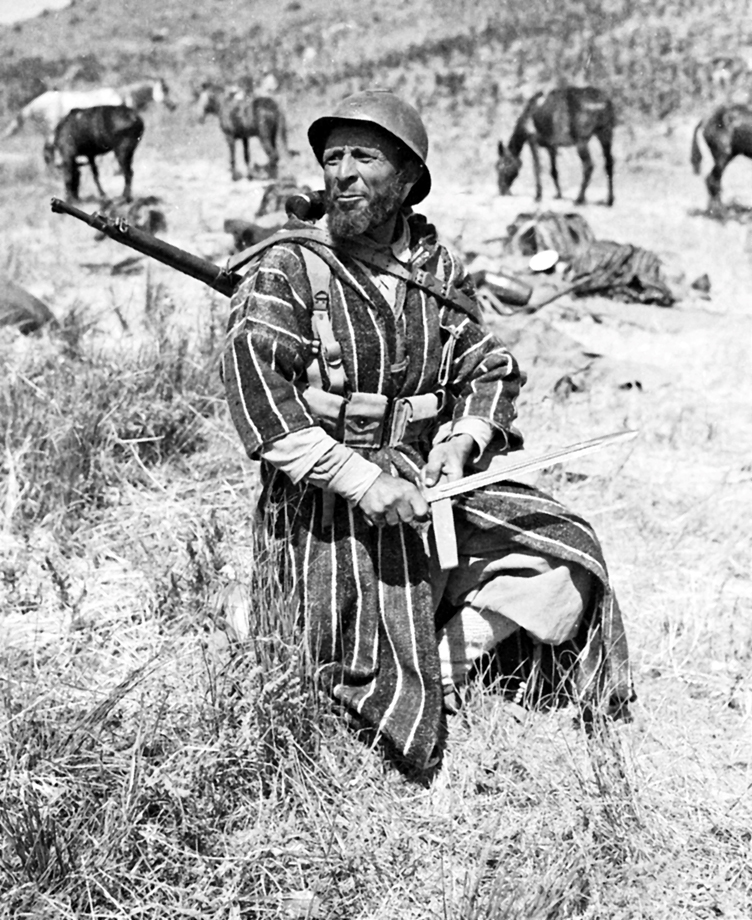
Credit: Getty Images
Soldier of the Moroccan French Expeditionary Corps in Italy
Women all over the world contributed to the war in a number of uncelebrated ways. They enthusiastically entered the workforce, made vital contributions to industry and advocated how important it was that the events of World War II were never repeated.
The USA began the war as an (officially) neutral, isolationist state. American policy was directed to help the Europeans – and particularly the British – in cash and kind, without sending any troops into active service. This changed spectacularly after Pearl Harbor, when the USA entered the war following a Japanese attack on the American naval base in Hawaii.
The USA made an invaluable contribution to the Liberation. They supplied its supreme commander – General Eisenhower – and had a decisive impact on its outcome. The country fielded six armies in Europe, each consisting of at least two corps. Like the USA itself, these armies were far from homogenous. Italian Americans participated in the invasion of Sicily, for example, and second-generation Japanese Americans also fought in the Italian campaign.
African Americans participated in the war in significant numbers, including the so-called “buffalo soldiers” of the 92nd Infantry Division. Many of them, however, later spoke of fighting two enemies at once – fascism abroad and racism within their own army. In parades, campaigns, church services and fighting units, black and white soldiers were segregated. The irony of a segregated division fighting for equality and unity in Europe was obvious, and an executive order officially ended segregation in the US armed forces in 1948 – although other forms of racism continued.
During World War II, Britain relied heavily on the manpower and supplies provided by its remaining colonies and the British Commonwealth.
Across the Commonwealth it was generally agreed that whatever grievances were harboured against Britain as the motherland, it was important to help win the war. Canada in particular made vital contributions to the Italian campaign, D-Day and the liberation of the northern Netherlands. Today, Canada’s main war museum is located in Ottawa (warmuseum.ca). Australia’s land units sent to the European theatre of war were all withdrawn by 1942 in order to counter the Japanese threat. New Zealand and South Africa fielded land troops in the African and Italian campaigns, while their trained aircrews formed RAF squadrons.
During the war, it became clear to Churchill that it would be impossible for the British Empire to survive in the new world that was being created. He knew Britain was gravely dependent on the military help of the colonies, but that their involvement would be paid for – directly or indirectly – by grants of independence.
British India, “the Raj”, formed the largest volunteer army in the world. Almost 2.5 million men were drawn from various regions and ethnic groups, and a number of Indian units took part in the liberation of Italy. India’s National War Museum is currently located in New Delhi.
When France fell in 1940, its armies were split and reduced in size. The Armée d’Afrique (Army of Africa), made up of colonial troops, was initially loyal to the Vichy government, but after the Allied invasion of North Africa (Operation Torch) in 1942 it became available to de Gaulle’s Free French forces. They formed eight army divisions to fight for the liberation of France. Algerian, Moroccan and west African soldiers were indispensable to France’s ability to resume the fight. They witnessed action in the Italian campaign of 1945–1944, and made up part of French Army B that landed on the Riviera in the summer of 1944 and liberated southern and eastern France. In 1945, they campaigned in southern Germany.
War-torn France emerged from World War II and the Liberation as a ravaged country unable to maintain its empire. Its colonial troops had mixed feelings about the war; they had fought bravely, but many felt their contribution was insufficiently recognized by “European” France.
Numerous soldiers and citizens of countries occupied by Nazi Germany wanted to fight on. Some chose the ranks of the resistance, others escaped the Wehrmacht and joined their governments-in-exile to form their own armed forces fighting under Allied command. Towards the end of the war, Free French, Belgian, Dutch, Greek and Norwegian forces took part in the liberation of their native countries. The fate of the Polish Armed Forces in the west, the largest of the armies in exile, was tragic. Despite having fought bravely for the freedom of others, they never took part in the liberation of their homeland. Many could never return to their new communist country for fear of political reprisals.
A series of personal reflections on the Liberation, considering the importance of the Liberation in the past, present and future.

Credit: Ellie Chesshire
History student at the University of Bristol
As a History student, I have studied World War II more times than any other period. This is unsurprising, given its historical significance in shaping Europe and the wider world. Its impact remains tangible; the scars of the Blitz are everywhere in London, the city where I grew up. There are still prefabs – “temporary” bungalows to replace houses destroyed by bombs – at the end of my road and the remnants of an air-raid shelter in our garden. For me, they are daily reminders of the struggle that took place. It is an important memory to keep alive, it stops us from taking for granted the hard-won joy of growing up in a diverse city. The “never again” message of the Holocaust should not only be remembered but be at the forefront of our minds. The sacrifices of those in the past inspire my generation to not be complacent, and remain resilient in the face of intolerance.
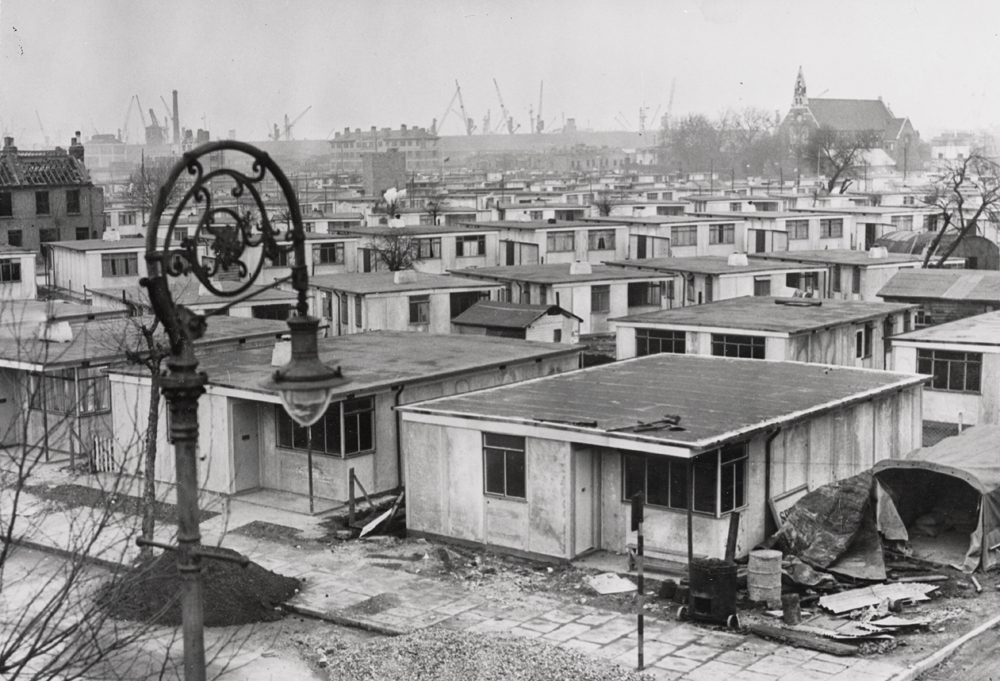
Credit: Getty Images
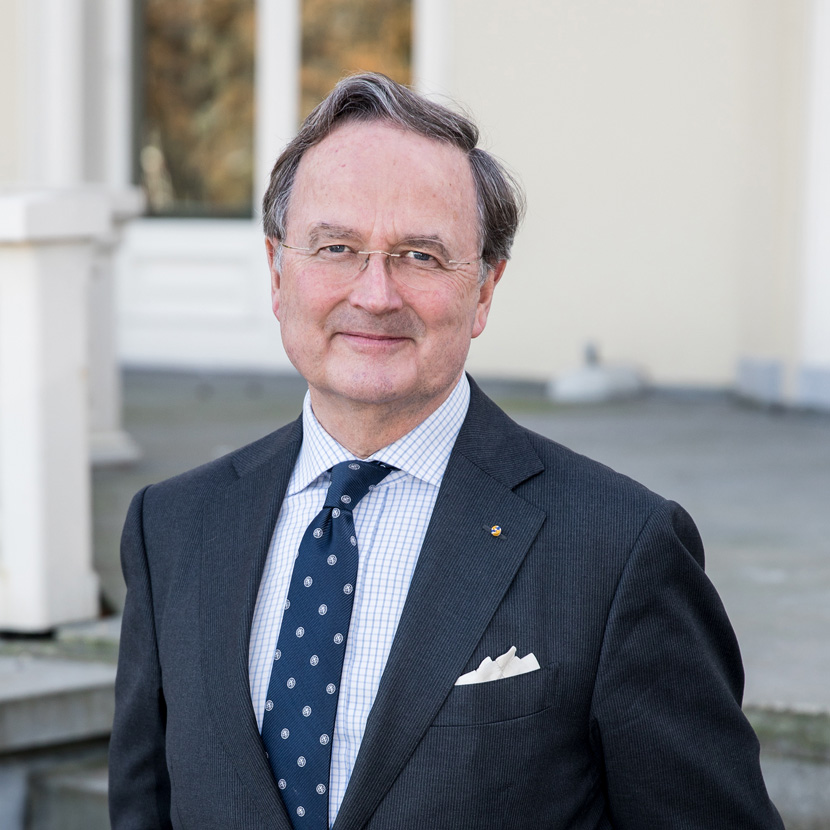
Credit: Gerben Pul
Chairman of the Dutch National Fund for Peace, Freedom and Veteran Care (vfonds)
Vfonds has proudly supported the Liberation Route Europe since its conception and we believe that the LRE has an important role to play in remembrance. To remember is to make people aware that living in a peaceful society, democratically run and governed by the rule of law, is not the experience of everyone and should never be taken for granted.
For the majority of western European nations, who have lived in peace for 75 years, it’s easy to think that our comfortable society is guaranteed. That would be a fatal mistake. Humankind tends towards realizing what it has – youth or health, for instance – only at the moment when it is lost. The same goes for fundamental human rights. The desire for freedom was never felt so gravely as in 1945, when Europe was liberated by Allied armed forces and resistance fighters. As Alsatian theologian Albert Schweitzer said, “the best plea for peace is a war grave”.

Credit: Liberation Route Europe
One who refuses to learn the lessons of history is doomed to repeat them. The 20th century witnessed two of the most devastating wars in history, including the most cataclysmic event of the modern age: World War II. People today tend to distance themselves from the grim realities of war, when I believe they need to be reminded. The further away we get from the misery of global conflict, the more important it is to make sure that people – especially the younger generations – understand the causes of World War II and how to avoid the repeat of such a catastrophe.
No one hates war more than the men and women who have fought in them. With this in mind, I decided to dedicate myself to travelling the world – and along the Liberation Route Europe – in an attempt to educate people from inciting war and generate support for our veterans.

Credit: Liberation Route Europe
Founder and Principal Architect at Studio Libeskind
The idea behind the Liberation Route Europe speaks not only of the past, but also of the future – it communicates the dark history of war, while telling the story of unity against the currents of hatred. The project has strength and modesty because it is based on a simple thing: the human foot. To experience the story of the Liberation does not require complex tools – it requires nothing more than to walk in the footsteps of those who went before.
I hope the trail will be a reminder to all visitors, residents and leaders that we must never forget the vastness of catastrophe and the ultimate triumph of the Liberation.
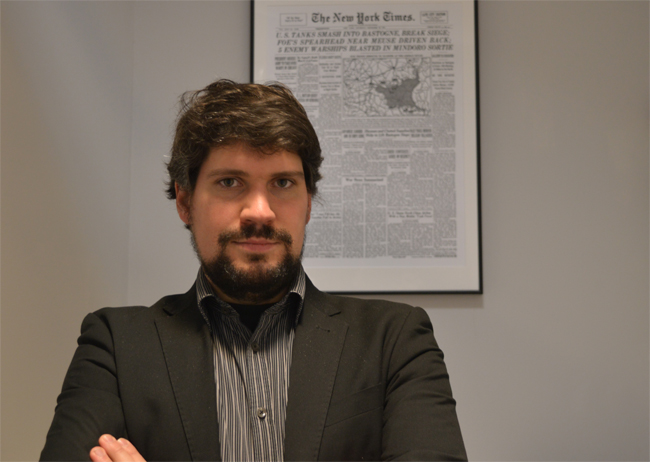
Credit: Mathieu Billa
To me, the Liberation of 1943–1945 represents the end of one of the darkest periods in European history. Besides the well-known images of happiness and joy that surround the Allied liberators, the Liberation also evokes feelings of pain and suffering. In the Ardennes, Hitler’s troops left in the autumn of 1944 only to return three months later; the “second” liberation in January 1945 brought death and destruction. Similar experiences abound, of a hard-won liberation born of violence and loss. Considering the world’s long history, these events are not that old. No one knows what tomorrow will bring, but by understanding the past we can certainly work towards a brighter future.
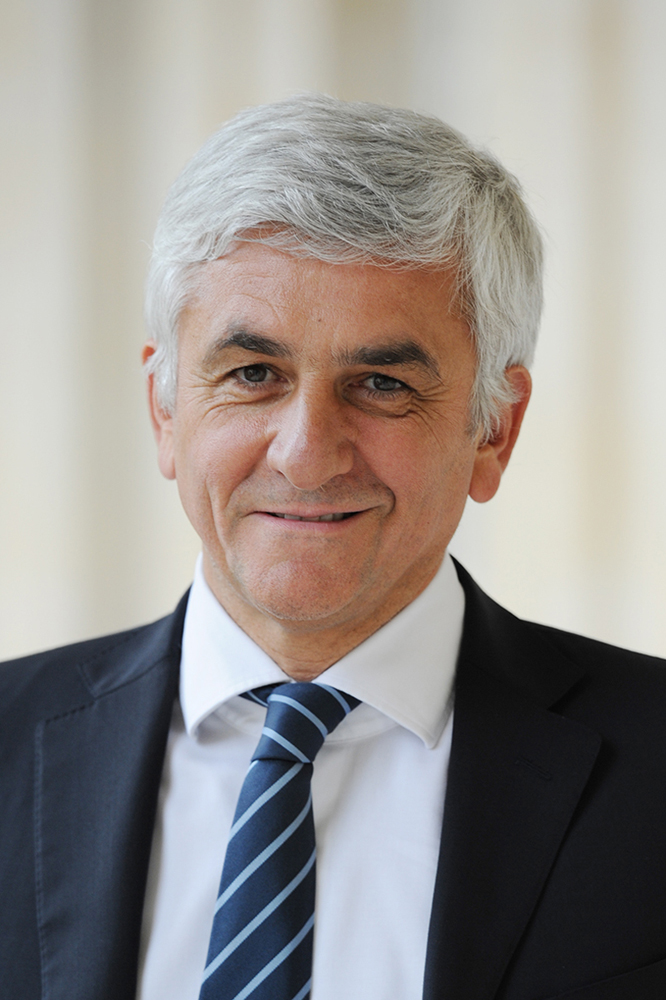
Credit: Normandy Regional Council
In my family, as in all Norman families, the D-Day landings and the Battle of Normandy are the subject of discussions, testimonies and stories that we all share. The Liberation of Europe, because it started in Normandy, is particularly important to us. With our history, Normandy and the Normans carry a collective and permanent commitment to peace. For that reason, I believe in passing the torch of memory to our new generations. Through numerous initiatives and annual events, including the World Peace Forum, Normandy consistently communicates the values of peace and freedom to the general public and especially to young people.
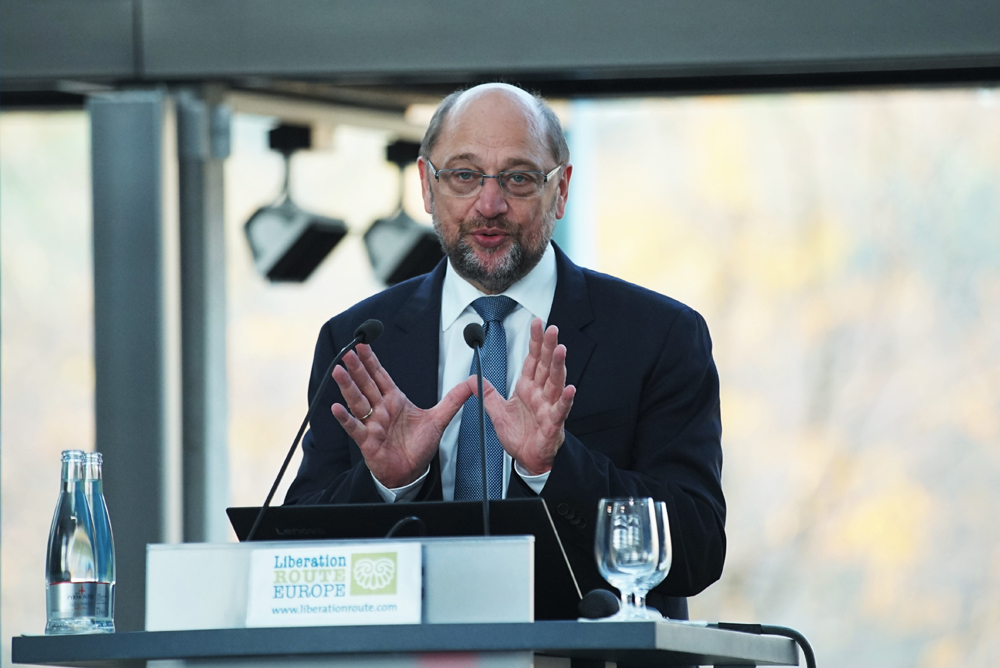
Credit: Liberation Route Europe
Former President of the European Parliament and member of the Bundestag
I grew up in a region where Germany, the Netherlands and Belgium meet: a European crossroads. But for a long time, borders shaped our outlook.
I was fortunate enough to witness European unification and later to help shape it. People in the European Union are now enjoying living in both unity and peace, but to maintain these achievements we must be aware of the past. We must never forget.
Remembrance gives rise to memory. And with memory comes one warning, that those who close their eyes to the past will be blind to the present. If you do not want to remember the inhumanity, you will be vulnerable to new contagion. So it is important to remember together.
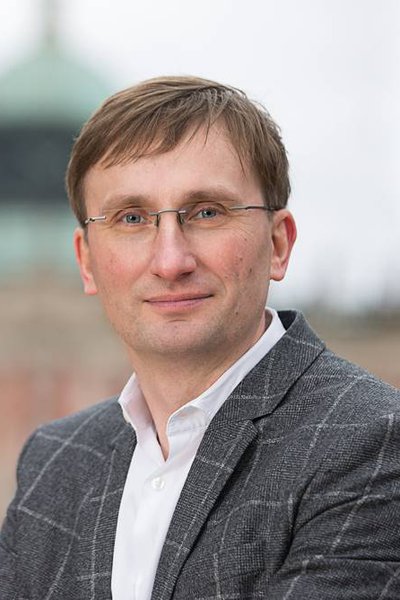
Credit: Public Domain
Historian and Chair of War Studies at the University of Potsdam
The Liberation Route Europe fosters a common European commemoration of the final period of World War II. This doesn’t mean that everyone has to share the same approach and the same view of the Liberation. But the project does bring together people from all over Europe, who can learn about the different experiences endured in other European countries. In France, Netherlands, Poland or Germany, the war had many faces.
I think that more than seventy years after the end of World War II, it is time to overcome easy black and white perceptions. We should strive for a more differentiated picture that doesn’t exclude painful topics which are sometimes omitted from official narratives. Remembering the Liberation in this way can help us to come to a better understanding of our common history.

Credit: Jean-Pierre Geusens
Chairman of the Foundation United Adopters American War Graves
As a young boy, I looked at the books on the library shelves. I always wanted one with a war story; those fascinated me. When I grew older, however, I came to learn that war is anything but fascinating. Pretending to be a soldier, playing with my friends, was fun as a child. Being an actual soldier, fighting a real war, is not.
Studying the stories of real people, involved in real conflict, gave these men and women a “face”. American soldier Lawrence Shea, for instance, died when he was just 21. I was thirteen when I read about him and “adopted” his grave through the Foundation United Adopters American War Graves. When I looked at Lawrence, it felt like looking at myself in the mirror. How would I feel if I was sent to war? What would I do?
The story of every individual soldier is powerful. The stories help us to remember, to nurture compassion and understanding and inspire us to do good in the world.
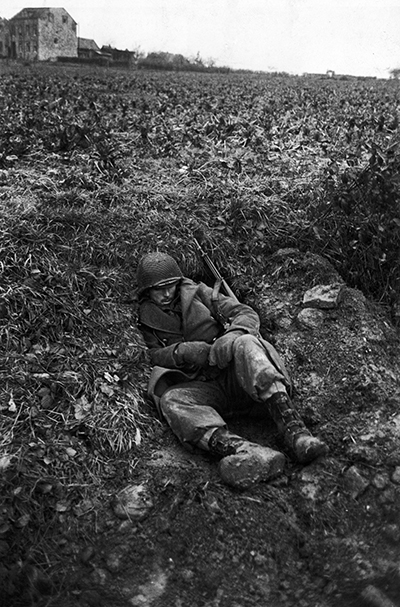
Credit: Getty Images
US soldier taking a nap in a foxhole near Stolberg, Germany, 1944